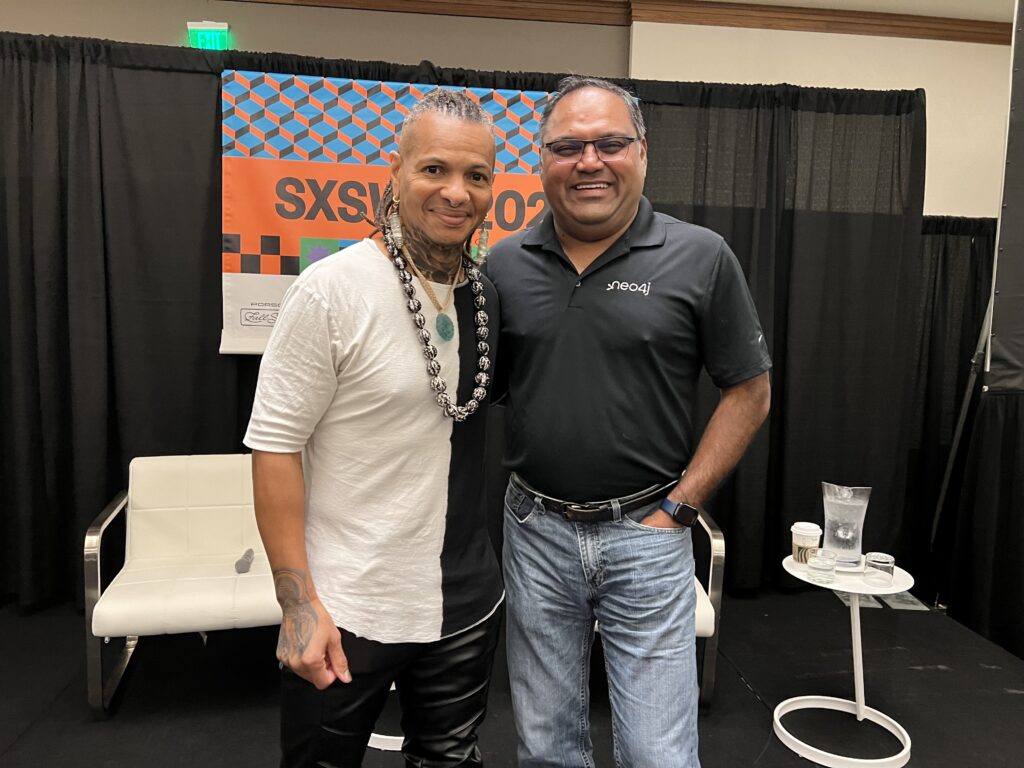
When Moriba Jah started tracking space junk orbiting the Earth, there were 26,000 objects ranging in size from a cell phone to the space station.
Of those, 1,200 were working satellites providing services.
“Everything else was garbage,” Jah said. “So, 96% of all human-made objects at that time were junk.”
He saw pollution on Earth and in the oceans, and he saw the same thing happening in space, which prompted him to become a space environmentalist.
So much debris now hurtles throughout our orbit, and it worsens daily. The space race began in 1957 when the Russians launched Sputnik, the first human-made object in orbit.
Today, Jah is tracking upwards of 50,000 objects ranging in size from cell phones to the space station, out of which a little over 5,000 are working, and everything else is garbage, he said.
Out of the 5,000, half are working satellites that belong to Starlink, a company founded by Elon Musk, who also founded SpaceX and Tesla.
“If you didn’t know, he’s launching 60 to 100 satellites every three weeks,” Jah said. “So, in a busy year, we used to launch a satellite a month. Maybe we’re launching over 12 satellites per week, on average, to provide the Internet and all these other things.”
Jah spoke in a fireside chat with Neo4j’s Sudhir Hasbe at South by Southwest Tuesday morning in a session titled “How the Tech That Tracks Space Junk Will Save Life on Earth.” Jah is the co-founder of Privateer, based in Maui, Hawaii. His co-founders are Steve Wozniak, Co-founder of Apple, and Ripcord CEO Alex Fielding. Privateer maps satellites and debris in Earth’s orbit. Jah is also an associate professor of Aerospace Engineering at the University of Texas at Austin and the winner of a MacArthur Fellowship called the Genius Grant. He received the grant for creating the world’s first real-time streaming of near-miss collisions and activity in space.
The privatization of space travel has led to more and more companies putting satellites in orbit. Jah said that more regulation is needed to govern how they operate once they get there and what happens when they no longer function. On average, a satellite lasts five years, he said.
To track objects in space, Jah set up ASTRIAgraph, which assigns a dot to every human-made object it detects. The data can be accessed through Wayfinder, a program Jah created to allow everyone access.
At SXSW, Jah projected all the objects orbiting Earth on a giant screen in real time. He showed what he calls a “super spreader event,” in which an object explodes in space and creates a massive trail of debris. There are 2,000 more of these “ticking time bombs in orbit,” Jah said.
Jah showed a dot identified as junk; its removal from space would cost an estimated $20 million.
“Most of the stuff that we put up there either never comes back, or it takes decades to centuries to burn up in the atmosphere, and it pollutes the atmosphere,” Jah said.
Jah said part of the problem is that satellites are not recyclable and reusable. All that junk threatens other objects in space and the Earth.
“When things die in orbit, they continue to go at very high speeds because we don’t have this off-ramp kind of stuff, and so we just send up another thing and another thing,” Jah said. So these orbital highways are becoming congested mostly with dead stuff, and bad things happen when two things meet at the same place simultaneously with different speeds, he said.
Jah can’t track things the size of a bullet or a speck of paint. Still, those debris objects exist in space and can travel 15 times the speed of a bullet and damage a satellite or astronaut on a spacewalk, Jah said. If that happens, “It’s game over,” Jah said.
Jah said the data he relies on for ASTRIAGraph comes from everyone from amateur telescope operators to the U.S. Department of Defense and other governments, like a Russian Database.
If a company launches another satellite, it must know which objects are where and at what speed they are moving; Jah said all those calculations must be done to continue space exploration. Jah said there are no standards or taxonomies for cataloging junk in space.
Jah’s company is spinning out Gaiaverse, which will take ASTRIAGraph and link data and information from the land and sea with air and space because Mother Earth, Gaia, is a holistic system of systems, Jah said.
“Indigenous populations inspire my work,” Jah said. “Indigenous people still believe that all things are interconnected in an intergenerational contract of stewardship with the planet.”
Jah wants to provide humanity with evidence of the interconnectedness so he can delay the knee-jerk response of saying that’s not my problem.
“If you look deep enough, you will see that true independence doesn’t exist, and while we may escape some of the consequences in our lifetimes, the people we love and those they engender will not,” Jah said. “Our collective decisions are currently leading to our self-extinction.”
Through the Gaiaverse, Jah hopes to raise consciousness and allow people to recognize they have the power to control outcomes and make better choices regarding the stewardship of the planet.
Jah’s Privateer Space company also works with the National Geographic Society to create the Glint Evader. It will collect satellite data to develop software that predicts and helps astronomers anticipate when sunlight reflecting off satellites may interfere with their observations.
Jah expressed frustration at the absence of government funding to solve the space junk problem. He emphasized the need for a collaborative effort.
Jah said there’s a huge need for space regulation. People must learn to live with space debris as a reality and work in a circular space economy where satellites are reusable and recyclable.
“We have to learn how to live within the filth of our bathwater, so to speak, and we can clean up some stuff,” Jah said.
Jah said it’s not if but when a black swan event will occur in space that brings global awareness to the problem posed by space junk.


